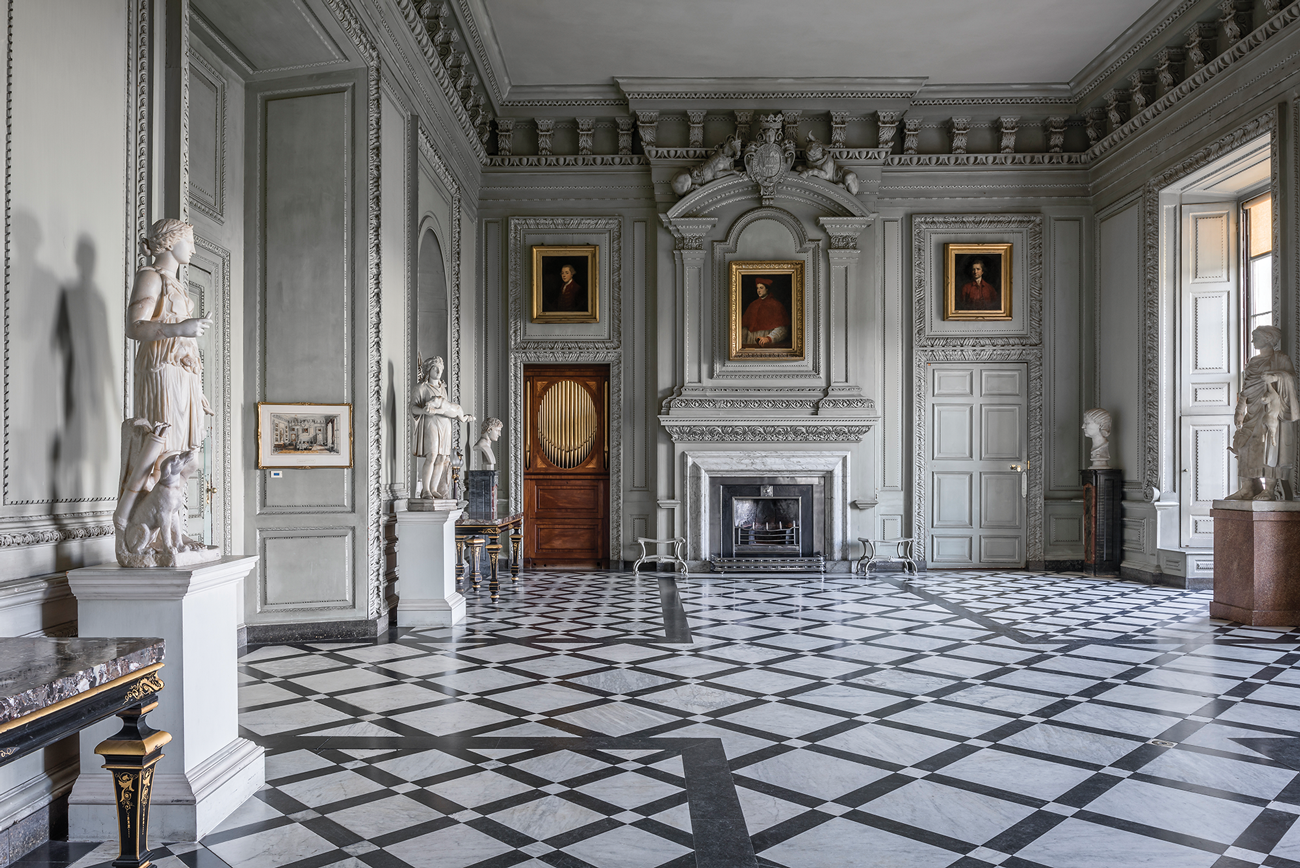
In this, the first of two articles, we are visiting Petworth House in West Sussex celebrating the Baroque.
The Marble Hall at Petworth was the main entrance to the house and is remarkably un-changed from the time of the 6th Duke of Somerset (1662-1748) who commissioned it. Work on it was largely completed by 1692. It is thought that it was probably designed by Daniel Marot (1663-1752). Born in Paris, Marot worked almost exclusively in Holland and England. He also published influential engraved designs.
Charles Seymour, the 6th Duke of Somerset married the Percy heiress Elizabeth. Known as the ‘Proud Duke’ he used his wife’s money to remodel her family’s seat at Petworth.
The Marble Hall at Petworth culturally embraces the classicising version of the Baroque style developed in France and apparent in the palatial interiors of Louis XIV’s Versailles. The influence of the Dutch can also be seen. Such a complete decorative scheme in the Baroque style is rare in England. The collections of classical sculptures and the late 17th century Florentine black and gold marble topped tables add to the grandeur of the space.
The confident, three-dimensional woodwork, including the Somerset coats of arms you see above the chimney pieces, were carved by John Selden. Thomas Larkin put the panelling up. The locks were made by the locksmith John Draper and engraved with the Duke’s arms. James Sayers indented the black and white marble floor, the design inspired by a pattern in C. A. d’Anvier’s ‘Cours complet d’Architecture’. Published in 1691 it was one of the most popular pattern books of the 17th century.
The 3rd Earl of Egremont filled the Marble Hall with pictures which were hung in tiers in all the available panels. This style of hanging survived until 1952 when Anthony Blunt, unknowingly, returned it to the earlier decorative scheme which you see here with pictures displayed only over the chimneypieces and doors.
Originally the Marble Hall would have opened onto a formal garden with ramparts, terraces and parterres, again commissioned by the Proud Duke. This form of garden design was inspired by the formal straight lines and topiary of the French royal gardens at Versailles designed by André Le Notre (1613-1700). George London (d.1714) and Henry Wise (1653-1738) made the parterre popular in England in the late 17th and early 18th centuries, creating the gardens at Petworth.
In early 18th century England there was a political desire, held by both the Whig government and Hanoverian King George I, to distance themselves from the excesses of the French Court at Versailles. This combined with a fascination for ‘unbounded nature’. In this climate Capability Brown’s park landscapes evolved in dialogue with his patrons, including the 2nd Earl of Egremont. Perhaps this is why his idealised landscape at Petworth speaks into the hearts and imaginations of the English.
Next week we will be visiting Petworth again to rediscover the Carved Room with its superb Grinling Gibbons carvings.